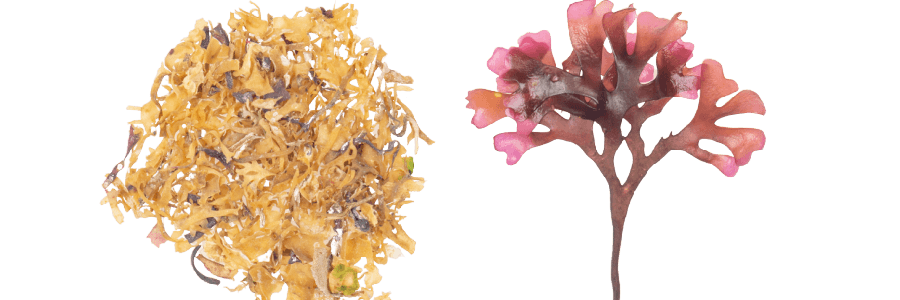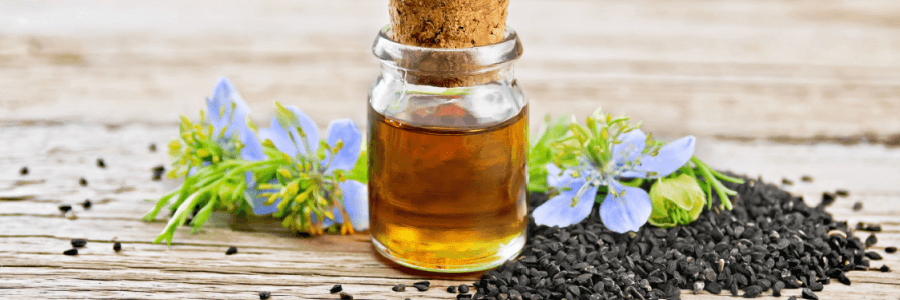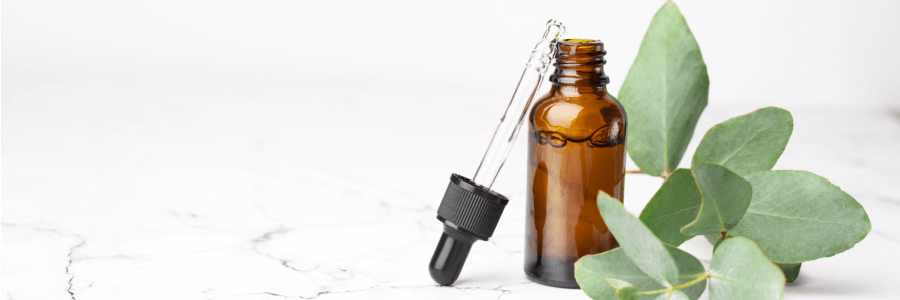Chondrus Crispus Vs. Genus Gracilaria
|



By now, most of us know irish sea moss is an edible algae that is commonly used in traditional medicine and as a dietary supplement. What you may not know, is that there are actually two main varieties of sea moss: Chondrus crispus and Genus gracilaria. In this article, we’re going to explore the main differences between these two forms of sea moss.
Chondrus crispus Vs. Genus gracilaria
Appearance
One of the main differences between the two types is their appearance. While both species vary in color, Chondrus crispus ranges from gold to dark purple or even red. Genus gracilaria on the other hand, maintains a lighter greenish-yellow color but can also be purple. Their shapes and textures also differ; Chondrus crispus is thicker and more bushy in texture its stipes are unbranched, flat and wide with rounded tips, compared to Genus gracilaria, while still slightly bushy, it is more of a branching seaweed, comprised of rounded branches with a thin, finger-like appearance.
Origin
Further, Chondrus crispus grows naturally on the rocks in the cold waters of the Atlantic cost of North America, Europe and Canada. Its cousin, Genus gracilaria is more found in warmer waters, such as the Caribbean, Jamacia and St Lucia. This species also grows all year long, making it more readily available throughout the year. Unfortunately, this causes many sea moss farmers to grow this variety in pools. This drastically affects the nutrient content available in this form as it is not grown in the rhythm of the ocean.
You should always do your due diligence when sourcing a new product whether it be sea moss or something else to ensure you are getting an authentic, naturally grown product.
While both varieties grow naturally on rocks, Genus gracilaria can also be grown on ropes. Chondrus crispus only grows on rocks, deterring farmers from growing this species in pools. Because it is more rare, and not available all year long or easy to grow in pools, there is a reduced risk in getting “fake” or “pool grown” sea moss. It is worth noting, however, that if you are being sold purple sea moss from Jamaica or St Lucia, it is likely not Chondrus crispus, but Genus gracilaria.
To learn more about pool grown vs wildcrafted sea moss, read this post:
How To Identify Real Vs. Fake Sea Moss | 3 Easy Tips
Nutrient Content
Both sea moss varieties are known for their high mineral content, including iodine, potassium, calcium, and magnesium. They also contain antioxidants, anti-inflammatory properties, and other beneficial compounds like carrageenan and anthocyanins. If you are making the choice between the two, the advantage of Chondrus crispus are its more dense nutritional profile, and overall stronger potency compared to its cousin Genus garcilaria.
For an in depth overview of Chondrus crispus, its benefits, nutrient content, and nutritional data, read this post:
Irish Sea Moss (Chondrus Crispus): The Beginner’s Guide
Which Variety Should You Choose?
Despite some similarities, Chondrus crispus is generally considered the superior sea moss variety due to its higher nutrient content and more potent medicinal properties. It is particularly rich in iodine, which is essential for proper thyroid function, and is commonly used in traditional medicine to treat respiratory and digestive issues. We recommend doing your research to find a reputable brand that offers high quality Chondrus crispus products such as raw purple sea moss for making gel, capsules, or gummies.
Final Remarks
In conclusion, Chondrus crispus and Genus gracilaria are both wild-grown sea moss varieties that offer a nice range of health benefits. However, Chondrus crispus is considered superior due to its higher nutrient content and medicinal properties. If you are looking to add sea moss to your diet, be sure to choose high-quality Chondrus crispus for maximum benefits.
Please speak with your doctor or other licensed healthcare professional before beginning any new supplement including Irish Sea Moss. None of the content on this site is or should be considered medical advice. The purpose of this article is simply to highlight relevant research papers for those curious about potential benefits of consuming Irish Sea Moss.

 Login
Login


